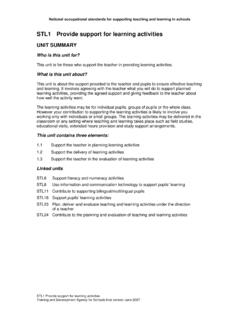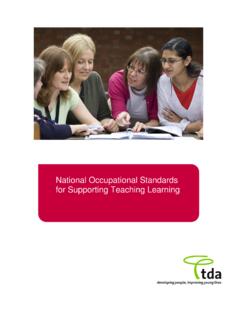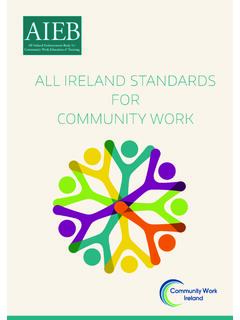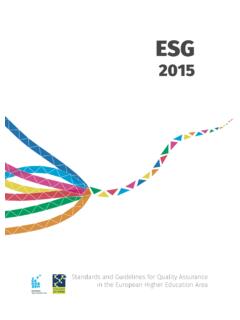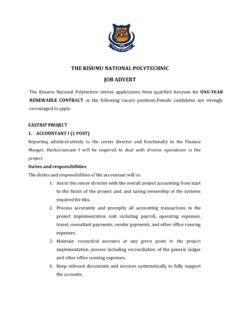Transcription of A SENCO's guide to supporting learners with autism
1 A SENCO s guide to supporting learners on the autism spectrumGood practice guidelines, resources and evidence based practical strategies for collaboration withA SENCO s guide to supporting learners on the autism spectrumAs a SENCO or Inclusion manager, you play a vital role in supporting the education of learners on the autism spectrum. This resource is aimed at SENCOs and provides some good practice guidelines on supporting learners with autism . It will also signpost to some evidence-based practical strategies and existing resources for SENCOs at various points. This resource is developed as part of the Whole School SEND autism Resource you are probably aware, the issue of terminology in the field of autism is complicated, as there is no clear agreement regarding the appropriate words to use.
2 We will be using the term autism or autism spectrum to describe the differences that an individual with the condition could have. We are avoiding the term disorder . Similarly, we are using person-first language (learner/learner with autism , or on the autism spectrum) rather than identity-first language (autistic learner) as suggested by some autistic adults and some researchers. This is because most studies around terminology do not include children s voices and therefore these debates do not necessarily represent children s views. Secondly, we acknowledge that identity is complex and is an individual choice and as a result should be negotiated with the individual learner (where appropriate) to ascertain their resource is aimed at SENCOs in Early Years settings as well as schools.
3 However, for ease of reading, school or education setting is used as a generic term to represent the different settings. For similar reasons the term learner has been used in this resource, to represent children and young people of every age group, rather than using a range of needs of autismAutism is a lifelong condition which impacts an individual s way of perceiving the world, communicating and interacting with others. The term spectrum signifies that these characteristics could vary in each individual. Therefore, while all learners with autism will have to show differences in some of these areas in order to meet the diagnostic criteria, it is important to remember that you will still need to understand how autism impacts the specific learner that you or your colleagues are an educational context, learners with autism are likely to show differences in three areas: Social understanding and communication - which could include: difficulties in expressing themselves or understanding what is being communicated, understanding indirect language, social interaction with others, expressing their emotions and perceiving others mental states.
4 Flexibility, information processing and understanding - which could make it difficult to cope with changes, see the relevance of what is being taught, and control their own impulses. Sensory processing - where the individual may respond in an unusual way to the sensory information (such as sound, touch, or body balance). learners with autism could have a very good eye for detail, which can be used for teaching specific subjects such as mathematics, science, design and technology. However, they may also find it difficult to get the gist of a topic or see the bigger picture. 2A SENCO s guide to supporting learners on the autism spectrumA SENCO s guide to supporting learners on the autism spectrumTherefore, staff need to regularly explain how the learning is relevant to the overall aim.
5 Generalising what has been learnt in one setting to another, or from one subject to another, could also be difficult for some learners . Opportunities must be given to practise new skills or rules in different contexts and with different people. This will be especially important with school rules for addition to these differences, learners on the autism spectrum could have other conditions such as learning difficulties, dyslexia, Attention Deficit Hyperactivity Disorder (ADHD), sensory impairments and anxiety (Levy et al., 2010). When considering educational provision and support, sufficient attention should be given to these additional conditions and their impact on the learner, to get a good idea of the distinctive needs and strengths of the good practiceThe autism Education Trust s (AET) Good autism Practice report (2019) suggests four key themes that are important for good quality autism provision: Understanding the individual.
6 Learning and development. Providing an enabling environment. Nurturing positive and effective four themes will be the basis of this resource, and we will develop some of the principles under each theme to explore some practical strategies and to provide guidance. This resource is structured under four key topics: 1. teaching , learning and curriculum. 2. Understanding autism diagnosis. 3. Role of support staff. 4. Planning staff 1 provides a checklist covering all the key suggestions. More general information on features of autism and provision of support for each area of difference can be found in the material produced by AET and via AET thinking about developing good autism practice within your setting, as a first step you may want to use the AET autism Standards to assess where your school or Early Years setting is in terms of your autism provision and identify a development plan accordingly.
7 This will help you in making your setting an environment where learners with autism can SENCO s guide to supporting learners on the autism spectrum1 teaching , learning and curriculumThe SEND Code of Practice (2015) recommends the use of the assess-plan-do-review cycle. This section provides suggestions which are related to these four phases. In practice however, these often overlap, so rather than presenting the information under each of these stages, it is presented under the four key topics listed , learning and curriculumPersonalised learningAssess the learner: learners with autism will often have uneven educational profiles, which could mean that while they are good at some subjects or tasks within a subject, they may not have similar understanding of other subjects or concepts.
8 As a SENCO you will need to help the staff to understand the learner s uneven profile, and have systems within the school which will help to capture the learner s a range of assessment approaches and tools should be used. The Education Endowment Foundation has guidelines which can be used for reflecting on the variety and appropriateness of assessments within your setting. The autism Education Trust has created a progression framework which could be used to understand the abilities of learners on the autism spectrum in a range of areas. This can be used along with Early Years outcomes, Development Matters and the national audits: Autistic advocates often express the impact that the sensory environment can have on their day-to-day functioning.
9 Educational settings by their very nature are full of sensory information. learners who are hyper-sensitive can find being in this type of environment overwhelming, and may need opportunities to withdraw to a quiet, calming area. On the contrary, learners who need a higher level of sensory stimulation could find some school activities, such as quiet reading and assemblies, under-stimulating and may need something like a fidget toy to help them to be is important that sensory audits of your school environment are conducted, to understand the potential impact of the environment on the learner. In addition to these, you may want to use a similar checklist to understand the personal sensory preferences of the individual learners . There are many such checklists available on the internet (including on the AET website) and in various books.
10 If your school has access to an occupational therapist, they can also help you in identifying such tools. Some learners may benefit from sensory circuit programmes such as the ALERT program. You could aim to incorporate such programmes for the whole class to help all the learners learning: Learning is enjoyable when it provides opportunities to develop skills and engage in subjects that an individual is interested in. It is important that learners with autism are given opportunities to develop their strengths. Several learners will also have special interests which can be used as motivators for learning. Encourage staff in your setting to understand the learner s interests and strengths by gathering information from parents/carers, previous teachers, observing the learner s performance in various activities, and asking the to the learner: Learner voice can be encouraged by using alternative strategies even when they are unable to express verbally, for example, by writing, drawing, using symbols and videos.

